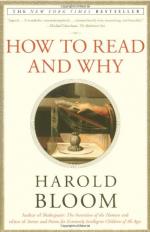|
This section contains 1,342 words (approx. 4 pages at 400 words per page) |

|
Chapter 4 Summary and Analysis
Hamlet: The discussion of "Hamlet" is the longest by far in the book, for "Hamlet" is the centerpiece in Bloom's experience of reading, and the central text of Western art and culture: "Hamlet's consciousness, and his language for extending his that consciousness, is wider and more agile than divinity has manifested yet." (p. 201). Bloom says that there are two Hamlets in the play, as the Hamlet of Acts 1-4 is a young man, but the Hamlet of Hamlet of Act 5 is about ten years older and wiser. Bloom says that Hamlet's "natural mode is an extreme ambivalence" (p. 202) and that he invites the audience to share his skepticism. According to Bloom, this is entertaining and also exasperating for the audience, because he models and also hides, in a way, the freedom he quests after in what Bloom calls his 'wild detachment...
(read more from the Chapter 4 Summary)
|
This section contains 1,342 words (approx. 4 pages at 400 words per page) |

|




